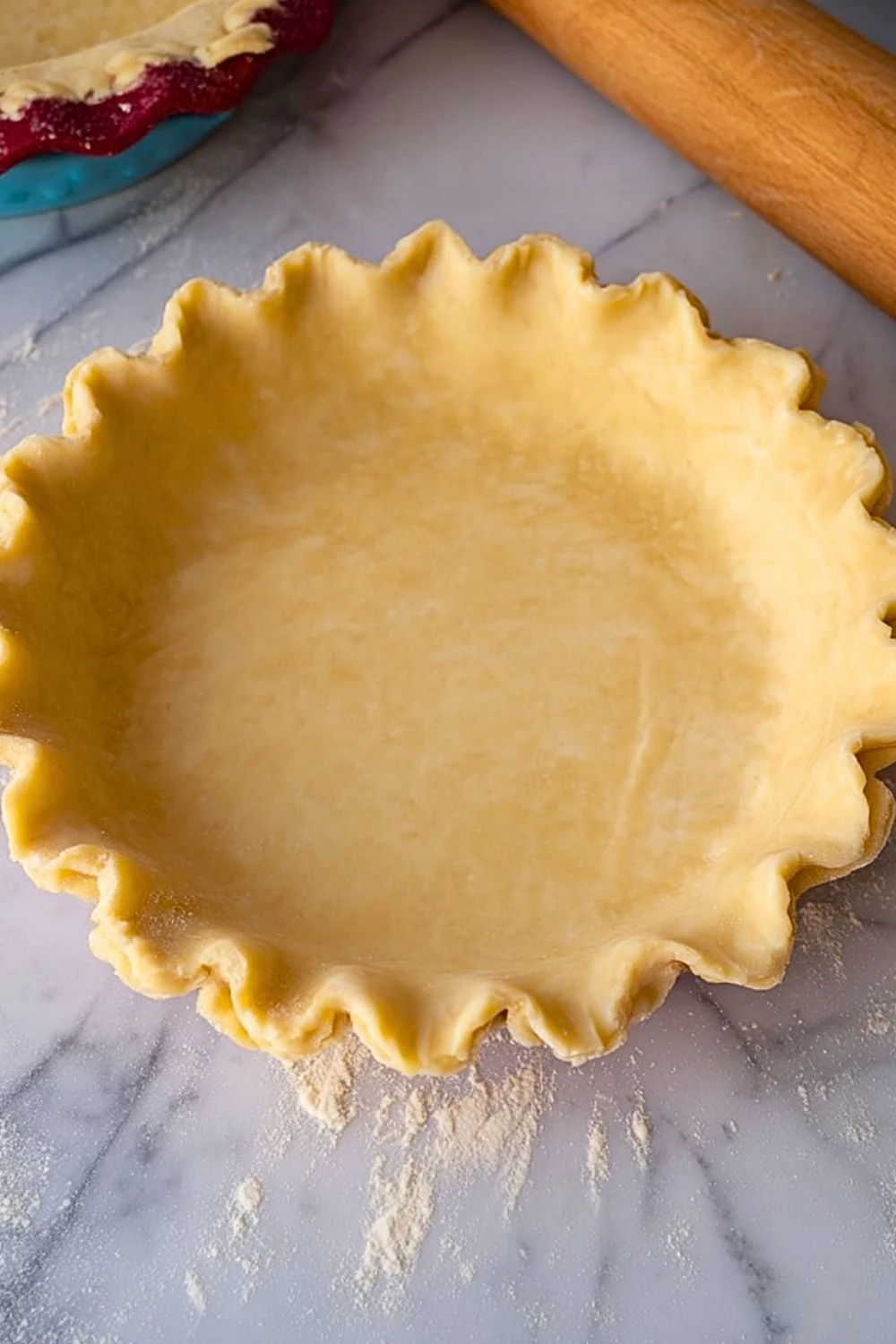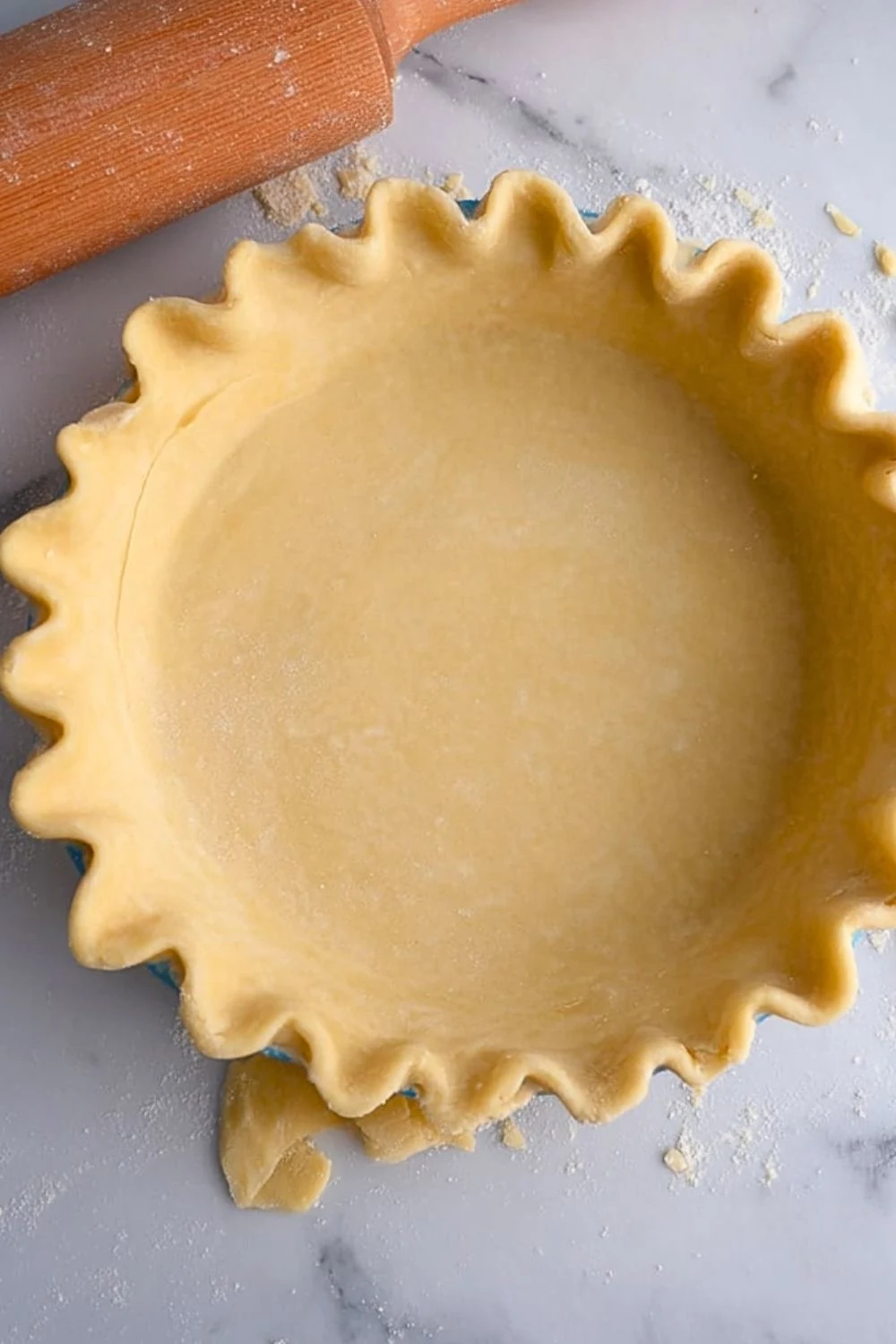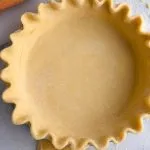When I first began experimenting with sourdough discard in recipes, I had no idea it would become the secret ingredient in my favorite pie crust. There's something deeply satisfying about giving new life to that tangy byproduct, especially when it transforms into a crust that's both buttery and crisp with just the right hint of complexity. This Flaky Sourdough Discard Pie Crust has quickly become my go-to for both sweet and savory pies.

The best part? It’s easier than it looks. The discard works magic in the dough, creating a texture that rivals any all-butter crust—flaky at the edges, tender at the base, and flavorful throughout. Whether you're planning a rustic apple pie or a silky quiche, this crust brings a subtle tang that elevates the entire dish.
Why You’ll Love This Flaky Sourdough Discard Pie Crust
This crust is all about balance—flavor, texture, and simplicity. It’s a great way to use up sourdough discard instead of tossing it, and it enhances your baked goods with a beautiful depth of flavor. You’ll get that rich, buttery flakiness you crave without needing any fancy techniques or ingredients. Plus, it’s freezer-friendly, making it perfect for prepping ahead.
What Kind of Flour Should I Use?
While all-purpose flour is the go-to for pie crusts, you can also use a blend with whole wheat for a nuttier profile. Just be mindful of adding too much whole grain—it can make the crust a bit tougher if not balanced with enough fat. Stick to all-purpose for a classic flaky finish, especially if it’s your first time working with sourdough discard in baking.
Options for Substitutions
If you don’t have unsalted butter, salted works just fine—just reduce the added salt slightly. Want to make it dairy-free? Use a plant-based butter alternative that’s designed for baking. You can even try mixing in a bit of shortening for an ultra-tender crust. And if your discard is on the thinner side, reduce the ice water slightly to compensate.
Ingredients for This Flaky Sourdough Discard Pie Crust
- All-purpose flour – The structure-builder. It creates the perfect balance of strength and tenderness for a sturdy yet flaky pie base.
- Cold unsalted butter – Essential for flavor and flakiness. The cold butter steams as it bakes, creating delicate, airy layers in the crust.
- Sourdough discard – Adds moisture, structure, and a mild tang. It replaces some of the usual water and provides character to the dough.
- Salt – Enhances the flavor of the crust and brings out the buttery notes.
- Ice water – Helps bind the dough without activating too much gluten, keeping the crust tender. Ice-cold water is key to keeping the butter cold.

Step 1: Mix the Dry Ingredients
In a large mixing bowl, whisk together the all-purpose flour and salt. This ensures even seasoning and sets the foundation for a balanced crust.
Step 2: Cut in the Butter
Cube your cold butter and add it to the flour mixture. Use a pastry cutter or your fingertips to blend until the mixture resembles coarse crumbs with pea-sized pieces of butter scattered throughout. These butter chunks are what create the flakiness.
Step 3: Add the Sourdough Discard
Spoon in the sourdough discard and gently mix it into the flour-butter blend using a fork or your hands. The discard will start to hydrate the dough while adding elasticity.
Step 4: Drizzle in Ice Water
Gradually add ice water, one tablespoon at a time, mixing just until the dough holds together when pinched. Avoid overmixing, which can lead to toughness. You want just enough moisture to bring the dough together without making it sticky.
Step 5: Shape and Chill
Turn the dough out onto a lightly floured surface. Divide it into one or two disks, depending on your pie needs, and flatten slightly. Wrap tightly in plastic wrap and chill for at least 1 hour (or up to 48 hours). This rest period allows the gluten to relax and the dough to firm up.
Step 6: Roll Out the Dough
Remove the dough from the fridge and let it sit at room temperature for 5–10 minutes to soften slightly. Roll it out on a floured surface, turning the dough often to prevent sticking. Aim for an even thickness of about ⅛ inch.
Step 7: Transfer to Pie Dish and Crimp
Gently lift the rolled-out dough and fit it into your pie pan. Trim excess and fold under the edges, then crimp or flute the rim as desired. If you're blind baking, chill again before baking.
Step 8: Bake as Needed
Follow your pie recipe’s instructions for blind baking or baking with filling. Typically, blind baking involves docking the crust, lining with parchment, and filling with pie weights. Bake until golden and crisp.
How Long to Prepare the Flaky Sourdough Discard Pie Crust
Prep Time
The hands-on prep takes about 20–25 minutes. That includes mixing the dough, cutting in the butter, and rolling it out. It’s important not to rush this step, as even small moments—like letting the dough rest between stages—make a big difference in the final result.
Chill Time
After forming the dough, it needs to rest in the fridge for at least 1 hour. This downtime is crucial to firm up the fats and relax the gluten, making rolling easier and preventing shrinkage during baking. You can even make it a day or two ahead and let it chill overnight.
Tips for Perfect Flaky Sourdough Discard Pie Crust
- Always use cold ingredients. Cold butter and discard are non-negotiable for creating those steam pockets that make a crust flaky.
- Handle the dough gently. Overworking activates the gluten and makes the crust tough.
- Use a light hand with water. Too much will make the dough sticky; too little and it will crack.
- Chill everything again before baking. This helps lock in the shape and texture.
- Roll from the center outward, turning frequently, to avoid sticking and ensure even thickness.
Watch Out for These Mistakes While Cooking
- Overmixing the dough: Once the dough starts to come together, stop mixing. Let it rest instead of forcing it to bind further.
- Skipping the chill time: This leads to melting butter and slumping crusts.
- Using warm butter or discard: You won’t get the flake you’re after.
- Not enough water: Dry dough is difficult to roll and will crack at the edges.
- Forgetting to dock or use pie weights for blind baking: This causes the crust to bubble up unevenly.
What to Serve With Flaky Sourdough Discard Pie Crust?
1. Classic Apple Pie
The tangy crust pairs beautifully with sweet, cinnamon-spiced apples. A scoop of vanilla ice cream finishes it off perfectly.
2. Chicken Pot Pie
Savory fillings like creamy chicken and vegetables get an upgrade from the buttery, flavorful base of this crust.
3. Quiche Lorraine
This custardy egg dish benefits from a crust that doesn’t get soggy and adds complexity to the bite.
4. Lemon Meringue Pie
The tart filling balances the mild tang of the crust, while the flaky layers hold the soft filling without collapsing.
5. Tomato Galette
A rustic option that lets the crust shine. Tomatoes, cheese, and herbs sit atop a golden, flaky sourdough base.
Storage Instructions
In the Fridge
Wrap your unbaked dough tightly in plastic wrap or place in an airtight container. It can be stored in the fridge for up to 48 hours. Let it sit out for 10 minutes before rolling.
In the Freezer
Double wrap and freeze dough disks for up to 3 months. To use, thaw overnight in the fridge. You can also freeze pre-rolled crusts in pie tins—just line with parchment between stacked crusts to prevent sticking.
After Baking
Once baked, the pie crust can be stored at room temperature (covered) for up to 2 days, or in the fridge for 4–5 days. For best results, reheat briefly to revive its crispness.
Estimated Nutrition
Note: Values are approximate and based on one crust (serves 8)
- Calories: 230
- Total Fat: 16g
- Saturated Fat: 10g
- Unsaturated Fat: 5g
- Trans Fat: 0g
- Cholesterol: 40mg
- Sodium: 180mg
- Total Carbohydrates: 18g
- Fiber: 1g
- Sugar: 0g
- Protein: 3g
Frequently Asked Questions
How do I know when the crust is fully baked?
The edges should be golden brown and the bottom should feel firm and lightly browned. If blind baking, lift the parchment to peek at the base.
Can I use active sourdough starter instead of discard?
Yes, but it will be more hydrated and active. You may need to adjust the water amount and chill time to prevent over-proofing.
Is it okay to make this crust ahead of time?
Absolutely. It actually improves with rest. Make the dough a day or two in advance or freeze it for long-term storage.
What if I don’t have pie weights?
Use dried beans, rice, or even granulated sugar. Just line the crust with parchment before adding weights.
Can I make this gluten-free?
Yes, by using a 1:1 gluten-free flour blend. However, texture and flakiness may vary, so don’t skip the chilling process.
Conclusion
Making a Flaky Sourdough Discard Pie Crust is one of the most rewarding ways to use up that tangy leftover starter. Not only does it prevent waste, but it delivers on flavor, texture, and versatility. Whether you're baking sweet or savory, this crust brings a whole new dimension to your pies. With a little prep and some attention to detail, you’ll have a golden, flaky, and unforgettable base that elevates any filling you choose.

Flaky Sourdough Discard Pie Crust
- Prep Time: 25 minutes
- Cook Time: 20 minutes
- Total Time: 1 hour 45 minutes
- Yield: 1 9-inch pie crust 1x
- Category: Baking
- Method: Mixing, Rolling, Baking
- Cuisine: American
Description
Looking for a way to use up your sourdough discard that doesn't involve more bread? This Flaky Sourdough Discard Pie Crust is buttery, crisp, and incredibly easy to make. With its subtle tang and perfect texture, it’s the ultimate upgrade to traditional pie dough. Ideal for quick breakfasts, easy dinners, or indulgent dessert ideas, this crust works beautifully with everything from savory quiches to sweet fruit pies. It’s one of the most versatile, beginner-friendly, and waste-reducing food ideas you can make at home.
Ingredients
1 ¼ cups all-purpose flour
½ cup cold unsalted butter, cubed
½ cup sourdough discard
½ teaspoon salt
2 to 4 tablespoons ice water
Instructions
1. In a large bowl, whisk together the flour and salt.
2. Add cubed cold butter and cut it into the flour until the mixture resembles coarse crumbs.
3. Stir in the sourdough discard using a fork or your hands until just combined.
4. Gradually add ice water, one tablespoon at a time, mixing until dough holds together.
5. Form dough into a disk, wrap in plastic, and chill for at least 1 hour.
6. On a floured surface, roll dough into a ⅛-inch-thick circle.
7. Transfer the dough to a pie dish, trim and crimp the edges.
8. Chill again before baking or blind bake using pie weights if your recipe calls for it.
9. Bake according to the filling’s recipe instructions or blind bake at 375°F for 15–20 minutes.
10. Cool before filling or serving.
Notes
Use only cold butter and discard to get the flakiest texture.
Don’t skip the chilling steps—they help the dough hold its shape and develop flavor.
You can freeze the dough for up to 3 months and roll it out directly from the fridge after thawing overnight.
Nutrition
- Serving Size: ⅛ of crust
- Calories: 230
- Sugar: 0g
- Sodium: 180mg
- Fat: 16g
- Saturated Fat: 10g
- Unsaturated Fat: 5g
- Trans Fat: 0g
- Carbohydrates: 18g
- Fiber: 1g
- Protein: 3g
- Cholesterol: 40mg
Keywords: flaky sourdough pie crust, sourdough discard recipe, easy pie crust, homemade pie dough, discard pie dough

